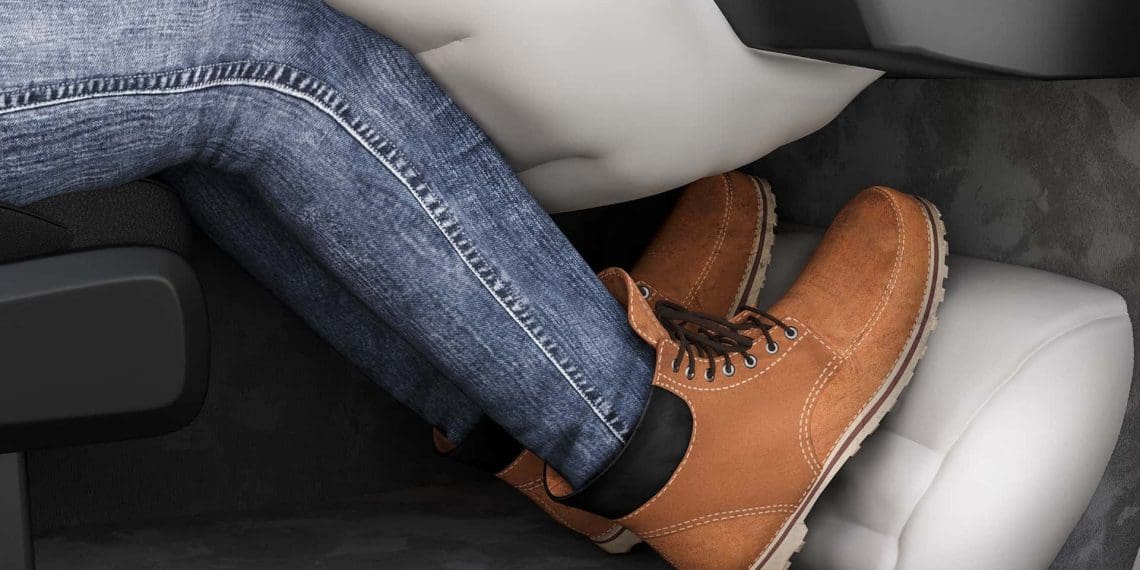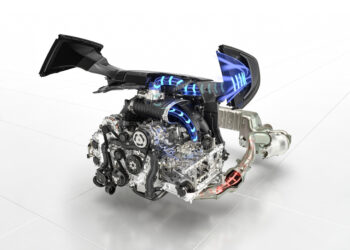Move over, six and eight-airbag systems—there’s a new innovation in automotive safety, and it’s targeting an area often overlooked: your feet. German safety technology giant ZF Lifetec has unveiled its latest breakthrough: the Active Heel Airbag, a system designed to prevent lower limb injuries in crashes, especially in vehicles with adjustable comfort seating positions.
While modern cars already include knee airbags to complement seat belts and frontal airbags, crash data suggests that uncontrolled foot movement during a collision increases the risk of long-term musculoskeletal injuries. The Active Heel Airbag aims to stabilize foot positioning, ensuring optimal energy absorption and injury reduction.
Why Do We Need a Heel Airbag?
✅ Adjustable Comfort Seating is Changing Safety Standards
As modern vehicles allow passengers (and potentially drivers) to move their seats farther back for increased comfort, their feet are no longer securely planted on the floor in the optimal position for crash impact absorption.
✅ Lower Limb Injuries Are a Growing Concern
While these injuries may not be life-threatening, they often lead to long-term impairment. In a crash, an unstable foot position increases the risk of severe leg and ankle fractures, twisting injuries, and knee hyperextensions.
✅ Knee Airbags Alone Are Not Enough
Crash tests have revealed that for a knee airbag to work optimally, the feet must remain securely positioned in the footwell. If a vehicle occupant’s heels are floating mid-air due to a reclined seat position, their knees may not absorb impact efficiently, rendering the knee airbag less effective.
🚨 The Solution? The Active Heel Airbag creates a stable impact point for the heel, even when occupants are in relaxed, extended-seat positions.
How the Active Heel Airbag Works
📌 Integrated Directly into the Footwell
- The Active Heel Airbag is designed to be hidden beneath the vehicle’s floor carpet, so it takes up no additional space.
📌 Deploys in a Crash
- In an accident, it rapidly inflates, creating a stable impact zone for the heel to rest against.
📌 Improves Energy Absorption
- With a firm heel plant, the knees can enter the knee airbag at the optimal angle, allowing more of the crash energy to be absorbed through the car’s structure—specifically the thigh bone, the strongest in the human body.
📌 Prevents Foot Twisting and Pedal-Related Injuries
- On the driver’s side, the system works in conjunction with camera-based interior monitoring to engage only when needed.
- In a crash, it helps prevent feet from twisting against the brake and accelerator pedals, a common cause of ankle fractures.
What Experts Are Saying
🔹 Harald Lutz, Head of Development at ZF Lifetec, emphasizes the airbag’s importance:
“If the heel contact point is missing, the knees can hardly be effectively immersed in the airbag, and the knee airbag does not achieve its full effect.”
🔹 Occupant movement control is critical to crash safety. Without the Active Heel Airbag, uncontrolled leg motion can lead to serious lower extremity injuries, even if upper-body safety systems function perfectly.
When Will It Be Available?
🚗 Launch Date: 2028
🔧 Customizable for almost any vehicle model worldwide
Manufacturers offering extended comfort seating will be among the first to integrate the system, ensuring enhanced protection for drivers and passengers alike.
Final Thoughts: A Game-Changer for Vehicle Safety?
The Active Heel Airbag is one of the most unique safety innovations in recent years. As vehicles evolve to prioritize comfort, automation, and alternative seating positions, safety must adapt accordingly.
This small but crucial addition could significantly reduce lower limb injuries in crashes, ensuring that advanced seating technologies don’t compromise safety.
Would you feel safer with a heel airbag in your car? 🚗💥🔥










